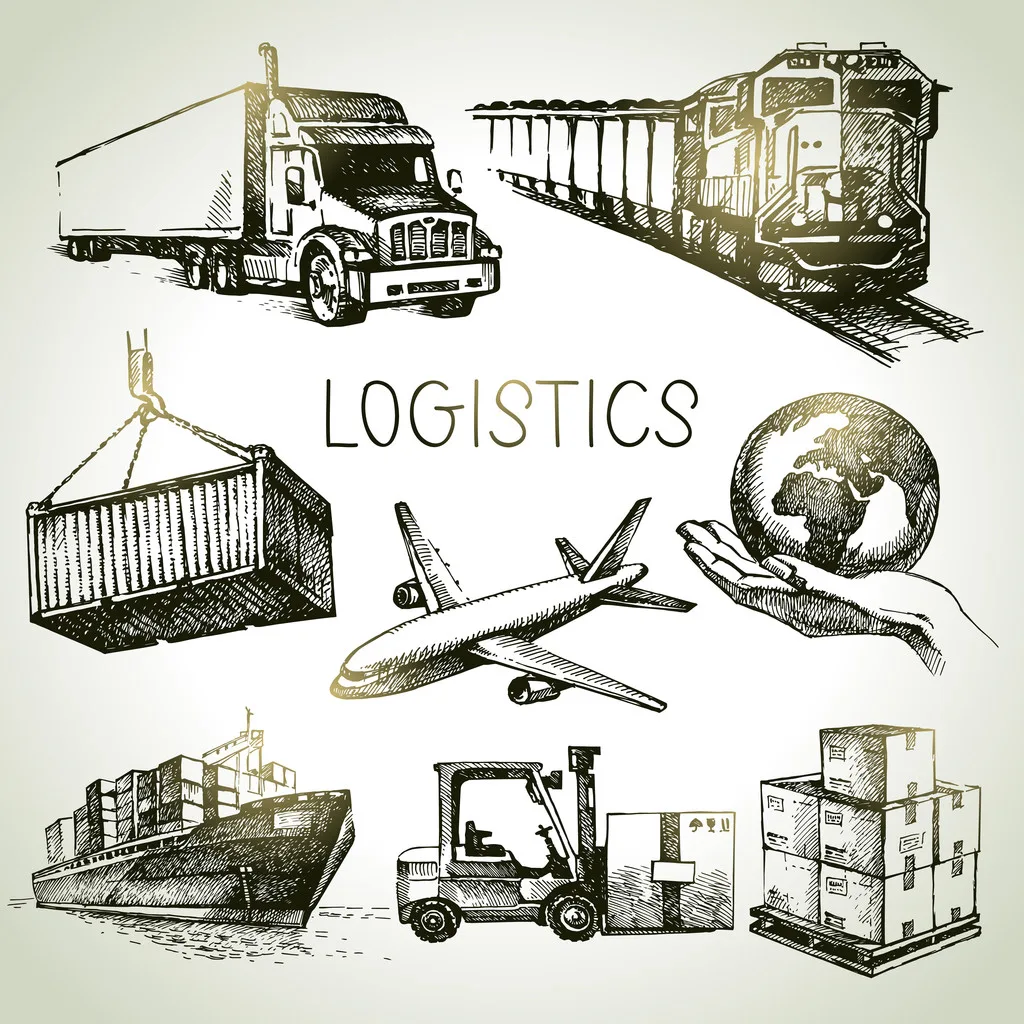In the context of global economic integration, China, as the leader of global manufacturing, has continued to expand its export sector, attracting the attention of many overseas buyers. However, ensuring smooth, safe and efficient cross-border logistics while effectively avoiding taxes and additional expenses has become a challenge in international trade. At this time, DDP (Delivered Duty Paid) stands out as a high-level trade delivery clause, providing a seamless solution for the flow of goods across national borders and deeply in line with the trend of global procurement.
International trade rules are complex. Among them, Incoterms defines the limits of liability between buyers and sellers in terms of logistics, insurance, tariffs and other costs. As a popular international trade standard, DDP is especially suitable for the export of goods from China to all over the world. Its core is to provide international transaction parties with a logistics model that integrates convenience, safety and economy. This article aims to deeply analyze the connotation, unique advantages, implementation steps and precautions in practice of DDP, with a view to providing a detailed operation manual for all parties involved in international trade.
Definition of Delivery Duty Paid (DDP)
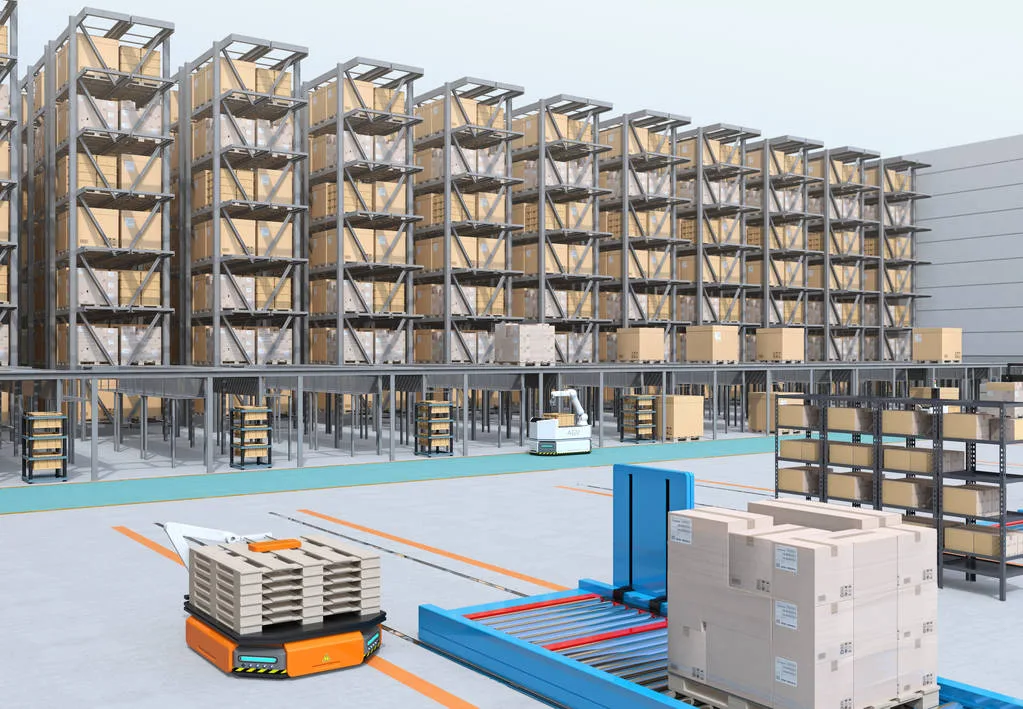
DDP, the full name of Delivered Duty Paid, is one of the terms widely used in the field of international trade. It clearly states that the seller must bear all responsibilities, costs and risks of delivering the goods to the buyer’s designated location. This package of responsibilities covers logistics, insurance, Import duties and taxes and all related taxes.
In-depth understanding: Distinguish the differences between DDP and DAP trade terms
Analysis of China’s Adoption of DDP Transportation Mode
Choosing the DDP model to ship from China means that the goods are shipped from China until they arrive at the final destination, during which all customs clearance costs are borne by the seller. This model greatly simplifies the buyer’s financial budget process and ensures the total transportation cost. The accuracy of the estimate also saves buyers from dealing with cumbersome customs documents and potential delays, greatly improving transaction efficiency.
The innovation of DDP logistics service lies in its “duty paid and paid” concept, which is provided by the freight forwarder and aims to relieve the consignee from worries about customs clearance and tax payment.
Adjustments to The Division of Roles and Responsibilities In China’s DDP Shipping
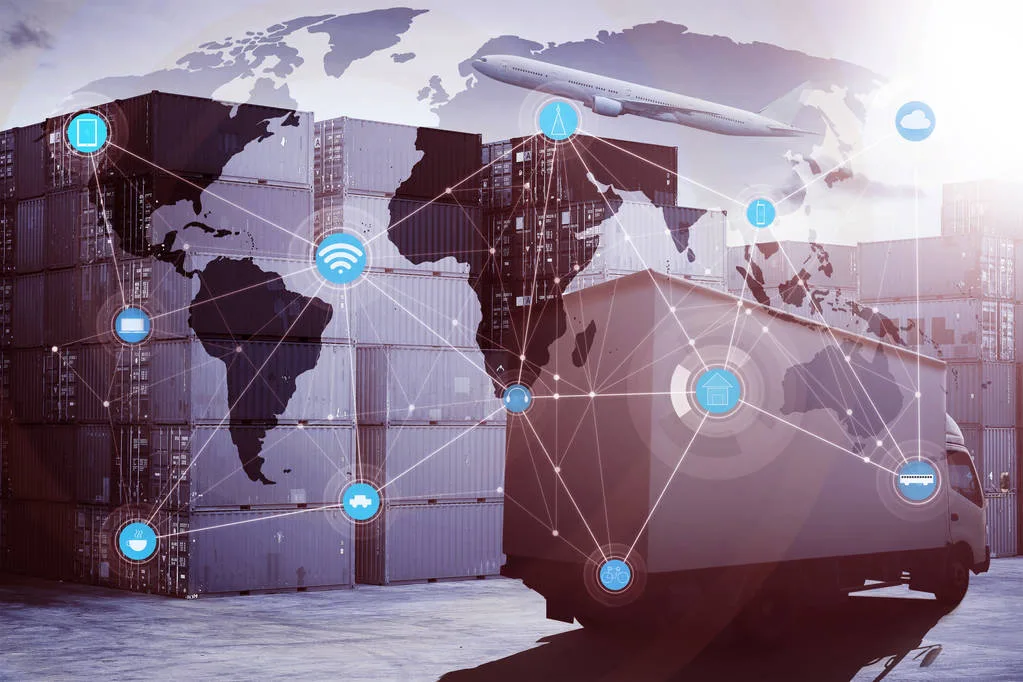
Responsibilities of the Seller (exporter)
Under the DDP clause, the seller bears the entire responsibility and expenses from the time the product leaves the factory (EXW is the minimum responsibility, DDP is the maximum responsibility) until the goods are delivered to the location designated by the buyer.
Including but not limited to obtaining necessary import licenses, handling customs clearance procedures between the exporting country and the importing country, paying all taxes and fees on the way, arranging international segment transportation, proper packaging and marking of goods, initial inland transportation within China, and final terminal distribution. .
If the seller is unable to obtain an import license for any reason, it should consider using DDU (Delivery Duty Unpaid) clause instead.
The Main Responsibilities of the Buyer (importer)
You only need to receive the goods after they successfully arrive at the designated location, and the seller will be responsible for all other matters involving logistics and taxes.
Attribution of Tariff Responsibilities of DDP
According to the terms of the DDP (Delivery Duty Paid) agreement, all import duties and taxes are borne and handled by the seller. This means that the seller is not only solely responsible for the logistics arrangements from the origin to the destination, but also needs to bear all tax expenses such as import duties and value-added tax (VAT) in the target market, which greatly reduces the buyer’s burden and burden in the import customs clearance process. Economic pressure, the buyer just needs to be prepared to receive the goods.
DDP Ocean Freight Execution Steps

Order and contract established: The buyer and seller reach an agreement based on the DDP terms and formally sign the contract, clarifying the legal responsibilities and cost sharing of both parties. The seller needs to have a detailed understanding of the buyer’s specific needs, such as delivery time windows and exact addresses.
Goods preparation: The seller organizes the goods to ensure that packaging and labeling comply with the import standards of the destination country to prevent possible problems during transportation.
Domestic logistics and export customs declaration: The seller organizes the delivery of the goods to the Chinese exit port and is also responsible for completing export customs clearance, including submitting necessary documents and paying relevant handling fees to ensure a smooth export process.
Cross-border transportation: Based on cost, time and cargo characteristics, the seller selects the best transportation method among sea transportation, air transportation or railway to ensure the safety of the goods and arrive at the destination country on time.
Import customs clearance in the destination country: After arriving in the destination country, the seller continues to be responsible for the import customs clearance, submits customs clearance documents, pays duties and taxes, and ensures that the goods enter customs in compliance with regulations.
Final delivery: After customs clearance is completed, the seller arranges the final inland transportation and delivers the goods directly to the buyer’s designated location, such as a warehouse, store or production site, completing the entire DDP delivery process.
What are The Ways to Ship from China DDP?

Detailed Explanation of Air DDP Shipment
DDP air freight service is an efficient and economical logistics solution from China to international destinations, especially suitable for time-sensitive and high-value cargo. In this model, the seller is responsible for the air transportation of the goods and assumes all import duties, taxes, and customs clearance processes in the destination country, providing buyers with a “door-to-door” worry-free experience.
The common operating procedures of China’s DDP air freight services have been optimized, such as the services provided by professional freight forwarders such as Baseton Logistics, including but not limited to:
Complete the export customs clearance formalities at the departure airport (such as Shanghai Pudong International Airport or Hong Kong International Airport).
Arrange air transportation of goods to the destination airport (such as New York’s John F. Kennedy International Airport JFK, and Germany’s Frankfurt Airport FRA).
Complete import customs clearance at the destination airport to ensure smooth entry of the goods.
Transfer the goods after customs clearance to a warehouse close to the destination for temporary storage.
Last-mile delivery, the goods are delivered to customers through local reliable express service providers (such as SF Express, TNT, or UPS local service).
Integration Of Innovative Logistics Models
In recent years, a new integration trend has emerged in the logistics industry, which is to decouple international long-distance transportation from local distribution to achieve cost optimization. Traditionally, international express delivery giants (DHL, FedEx, UPS) provide a full range of high-priced services from start to finish. Now, by combining international segment transportation with local express services in the destination country, companies can significantly reduce logistics costs while maintaining transportation efficiency. This method achieves the best balance between logistics costs and service quality by flexibly selecting the optimal service for each segment.
Ocean Freight DDP Shipping from China
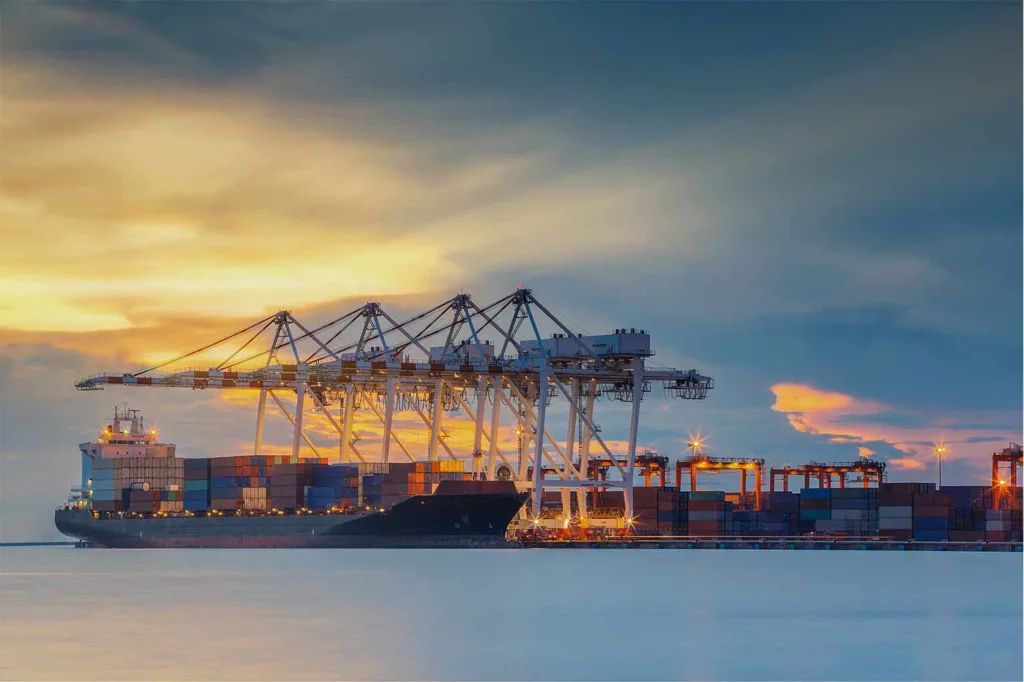
Ocean DDP transportation is the most economical and flexible way to transport goods.
DDP Shipping involves several different shipping companies. Ocean shipping requires shipping companies to transport goods from one country to another, so door-to-door delivery services in various countries can be provided through express companies such as UPS or FedEx.
The next step is customs clearance. In order to ship goods internationally, they must clear customs in both countries. This is a complex process involving many people, but it is necessary in order to comply with international law and support the free flow of trade across borders.
Next are duties and other fees. Due to U.S. tariffs on imported goods, additional charges must be paid before shipment.
Walau bagaimanapun, di sebalik kos tambahan ini, pengangkutan laut kekal sebagai mod pengangkutan yang paling kos efektif, terutamanya kerana ia mengambil kesempatan daripada skala ekonomi.
Pengangkutan DDP Pengangkutan Keretapi China
Dalam Pengangkutan Rel DDP, penjual e-dagang tidak perlu memberikan sebarang baucar, nombor VAT atau EORI. Dokumen pengisytiharan kastam sebenarnya diproses oleh Basinton Logistics, dan cukai dan yuran ditentukan oleh kami. Apa yang anda perlu lakukan ialah mengisi dokumen kastam dengan maklumat akaun perniagaan anda. Setelah produk berada di gudang FBA, ia sedia untuk dijual.
Masih terdapat banyak faktor yang perlu dipertimbangkan semasa menghantar barang, termasuk masa transit, kos dan pilihan pelanggan. Penghantaran kereta api dari China ke Eropah ialah kaedah penghantaran yang pantas, cekap dan berpatutan untuk pembeli atau penjual e-dagang. Tiada kos tambahan diperlukan.
DDP Shipping Service Applicable Scenarios

Perkhidmatan DDP sesuai untuk pelbagai kaedah pengangkutan, termasuk pengangkutan laut, pengangkutan udara, pengangkutan darat, dll. Terutamanya untuk barangan yang dihantar ke gudang pihak ketiga seperti gudang Amazon dan gudang luar negara, DDP pelepasan dua kali bebas cukai pintu-ke -mod pengangkutan logistik pintu diguna pakai. Selain itu, perkhidmatan DDP juga boleh menyediakan penyelesaian pengangkutan yang pantas dan boleh dipercayai untuk barangan yang memerlukan penghantaran cepat dan keperluan masa yang tinggi.
Malah, penggunaan meluas DDP untuk penghantaran di China bermula dengan Amazon.
“Amazon tidak bertanggungjawab untuk atau mengutip sebarang duti, cukai atau yuran penghantaran yang berkaitan dengan inventori FBA. Semua penghantaran mesti menggunakan Delivered Duty Paid (DDP), kadangkala dipanggil terma penghantaran "Penghantaran Percuma". Sebarang penghantaran ke pusat pemenuhan Amazon Barangan yang caj telah dibuat, termasuk sebarang duti, cukai atau caj pengangkutan, akan ditolak dan tiada konsesi selanjutnya akan dibuat.”
Satu lagi kelebihan besar ialah anda boleh mengambil semua tekaan daripada kos pembelian CIF. Harga yang anda bayar kepada pembekal ialah harga akhir dan termasuk kos penghantaran barangan di China. Ini menjadikan pengiraan untung dan rugi sangat mudah, terutamanya untuk penjual Amazon FBA yang mesti mempertimbangkan yuran penjual dan yuran FBA untuk mengira keuntungan dengan betul.
Kelebihan dan Kekurangan Penghantaran DDP
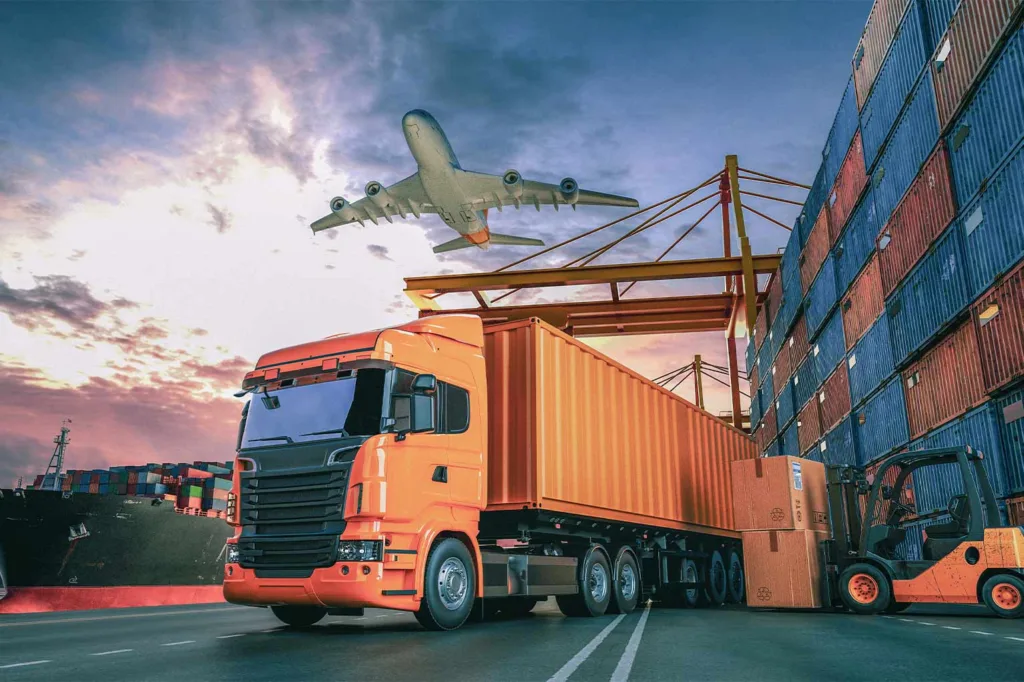
Kelebihan
Kurangkan risiko pembeli: Di bawah syarat DDP, pembeli tidak perlu risau tentang membayar yuran tambahan seperti duti dan pengangkutan, yang mengurangkan risiko transaksi.
Tingkatkan kecekapan transaksi: Penjual bertanggungjawab ke atas semua prosedur pengangkutan dan pelepasan kastam, mengurangkan pautan operasi pembeli dan meningkatkan kecekapan transaksi.
Permudahkan proses perdagangan: Klausa DDP memudahkan proses perdagangan, mengurangkan syarat kontrak dan mata pertikaian serta mengurangkan kos transaksi.
Kelemahan
Peningkatan kos untuk penjual: Penjual perlu menanggung semua kos penghantaran dan pelepasan kastam, termasuk duti dan cukai, meningkatkan beban kos.
Peningkatan risiko untuk penjual: Penjual perlu menanggung risiko keseluruhan proses pengangkutan, termasuk risiko kehilangan, kerosakan, dsb. barang, yang meningkatkan pendedahan risiko.
Boleh menyebabkan kenaikan harga: Disebabkan peningkatan kos penjual, harga barang di bawah syarat DDP mungkin meningkat dengan sewajarnya, menjejaskan daya saing pasaran.
Ketahui Lebih Lanjut: Kelebihan dan Kelemahan Protokol Penghantaran DDP

